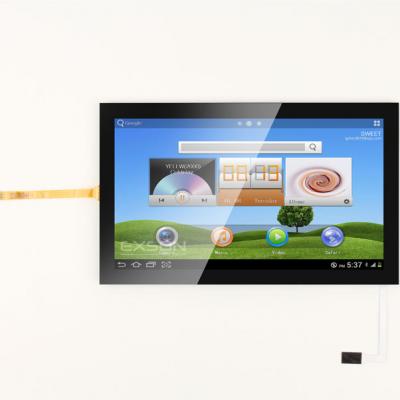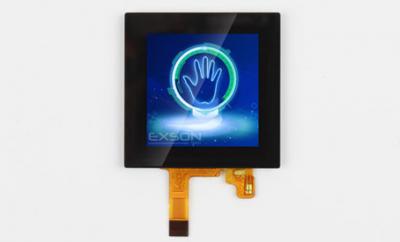In the ever-expanding landscape of interactive technology, LCD touch screens have become the unsung heroes, transforming the way we engage with our digital devices. From smartphones and tablets to interactive kiosks and information displays, the prevalence of LCD touch screens has made them an integral part of our daily lives. Let's embark on a journey to uncover the magic behind these touch-sensitive marvels, exploring their workings, applications, and the impact they have on our digital interactions.
At the heart of an LCD touch screen lies a symphony of layers working seamlessly together. The display comprises layers of glass or other transparent materials, including an array of liquid crystal pixels. Overlaid on the LCD panel is a touch-sensitive layer, typically composed of indium tin oxide (ITO) or a similar conductive material.
Resistive Touch: This technology involves two flexible layers that are separated by a small gap. When pressure is applied, the layers make contact, completing a circuit and pinpointing the touch location. Resistive touch screens are known for their durability and compatibility with various input methods, including styluses and gloved fingers.
Capacitive Touch: LCD capacitive touchscreen utilizes the electrical charge of the human body to detect touch. The screen is coated with a transparent conductive layer, and when a finger touches the screen, it disrupts the screen's electrostatic field, pinpointing the touch location. Capacitive touch screens are known for their responsiveness and multi-touch capabilities.
Infrared Touch: Infrared touch screens use infrared sensors to detect touch or movement. These screens have infrared LEDs on one side and receivers on the opposite side, creating an invisible grid of light. When an object touches the screen, it interrupts the infrared light, allowing the system to identify the touch location.
LCD touch screens have transcended their initial role in personal devices, expanding into a myriad of applications:
Smartphones and Tablets: The ubiquitous touch screens on our handheld devices have revolutionized how we interact with technology, offering intuitive gestures and seamless navigation.
Interactive Kiosks: Touch screens and touch panel module have become a staple in public spaces, empowering users to access information, make selections, and engage with interactive content in various settings, from malls to museums.
Point-of-Sale Systems: LCD touch screens streamline transactions, providing a user-friendly interface for both customers and operators in retail and hospitality environments.
Education and Training: Touch screens have found their way into classrooms and training facilities, fostering interactive learning experiences and making education more engaging.
As technology evolves, so too will LCD touch screens. Innovations like edge-to-edge displays, increased sensitivity, and advancements in haptic feedback promise an even more immersive and responsive user experience.
In conclusion, LCD touch screens have seamlessly woven themselves into the fabric of our digital interactions, bridging the divide between humans and technology. From the tap of a finger on a smartphone to the interactive displays that surround us, the touch screen revolution continues to redefine how we navigate the digital landscape. As we look ahead, the potential for new breakthroughs and applications is boundless, ensuring that LCD touch screens will remain at the forefront of our interactive future.
 The Difference between OLED and TFT DisplaysDecember 9, 2022OLED is one of the hottest concepts in the current display industry, and OLED itself has many advantages. For another concept in the real industry - TFT, perhaps not so many people know about it. Toda...view
The Difference between OLED and TFT DisplaysDecember 9, 2022OLED is one of the hottest concepts in the current display industry, and OLED itself has many advantages. For another concept in the real industry - TFT, perhaps not so many people know about it. Toda...view Touch Screen Monitor Maintenance MethodDecember 29, 2021In today's rapid development of technology, professional touch screen monitors provide great convenience for our work and life, but also make people more and more inseparable from it. Now the cost...view
Touch Screen Monitor Maintenance MethodDecember 29, 2021In today's rapid development of technology, professional touch screen monitors provide great convenience for our work and life, but also make people more and more inseparable from it. Now the cost...view Resistive Touch Screen Working Principle and ApplicationsDecember 9, 2022A resistive touch screen is a sensor that converts the physical location of a touch point (X, Y) in a rectangular area into a voltage representing the X and Y coordinates. Many LCD modules use resisti...view
Resistive Touch Screen Working Principle and ApplicationsDecember 9, 2022A resistive touch screen is a sensor that converts the physical location of a touch point (X, Y) in a rectangular area into a voltage representing the X and Y coordinates. Many LCD modules use resisti...view What Are the Characteristics of LCD Display Panels?September 26, 2022Ⅰ. What are the characteristics of LCD display panels?1. The body is thin and space-saving: Compared with the bulky CRT display, the LCD display panel only needs one-third of the space of the former....view
What Are the Characteristics of LCD Display Panels?September 26, 2022Ⅰ. What are the characteristics of LCD display panels?1. The body is thin and space-saving: Compared with the bulky CRT display, the LCD display panel only needs one-third of the space of the former....view The Crucial Role of Industrial TFT Displays in AutomationJanuary 29, 2024In the rapidly evolving landscape of industrial automation, technological advancements have become instrumental in enhancing efficiency, precision, and overall productivity. Among these innovations, I...view
The Crucial Role of Industrial TFT Displays in AutomationJanuary 29, 2024In the rapidly evolving landscape of industrial automation, technological advancements have become instrumental in enhancing efficiency, precision, and overall productivity. Among these innovations, I...view Integrating Industrial TFT Display with Embedded SystemsMay 9, 2024With the development trend of industrial automation and intelligence, the integration of industrial TFT display and embedded system has become the key to improve the efficiency of human-computer inter...view
Integrating Industrial TFT Display with Embedded SystemsMay 9, 2024With the development trend of industrial automation and intelligence, the integration of industrial TFT display and embedded system has become the key to improve the efficiency of human-computer inter...view Call us on:
Call us on:  Email Us:
Email Us:  2F-M1 XiaWei Industrial Park, GuanLan, LongHua District, SZ, China
2F-M1 XiaWei Industrial Park, GuanLan, LongHua District, SZ, China